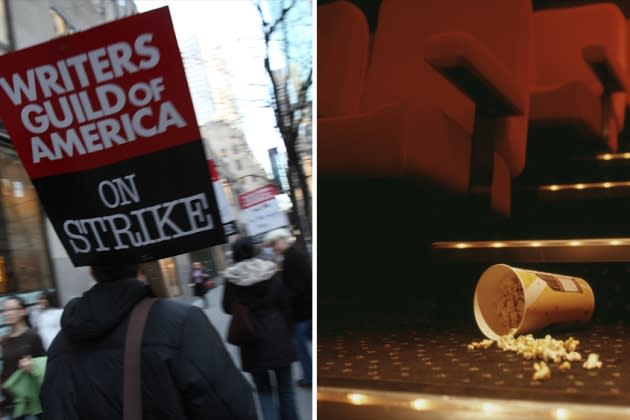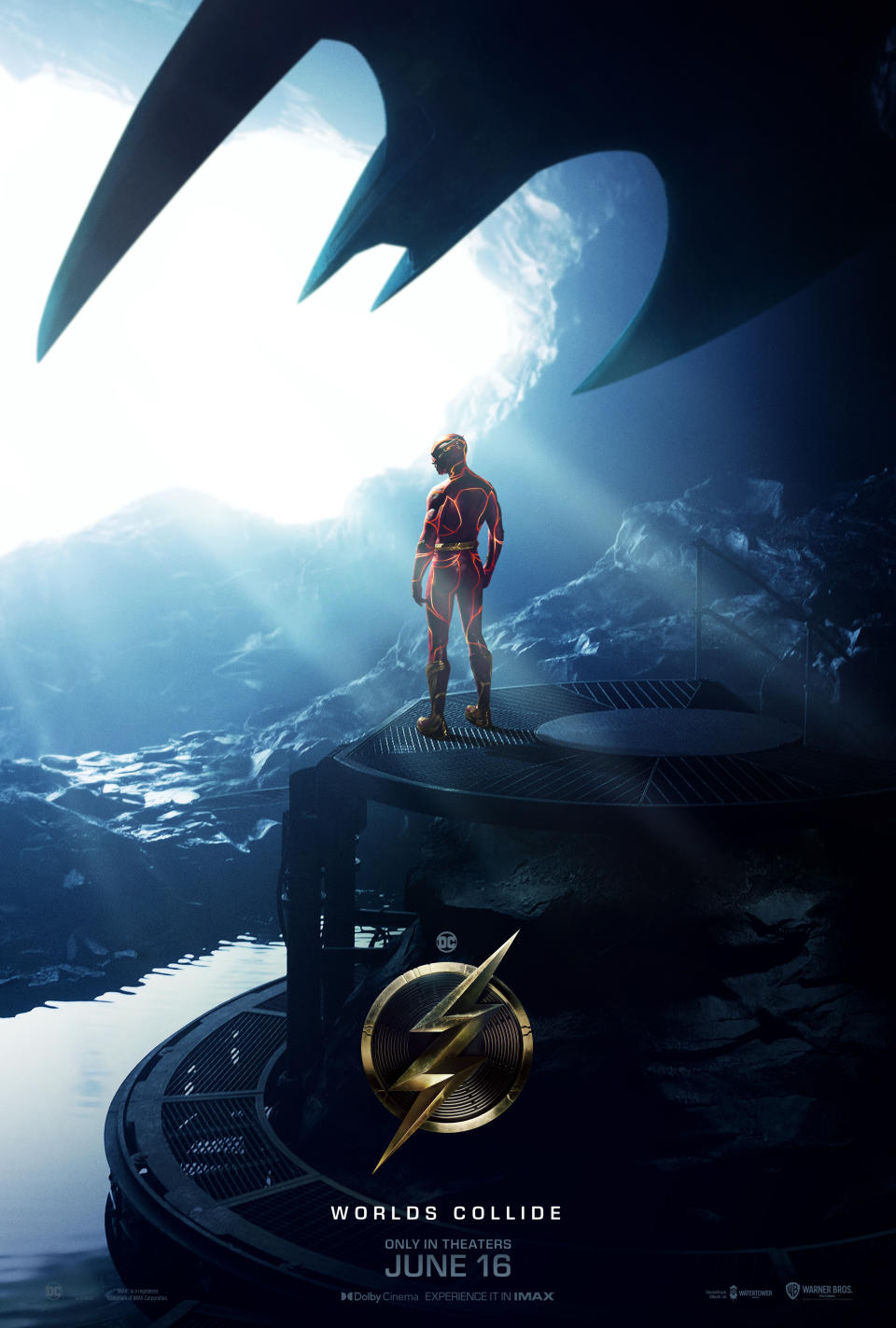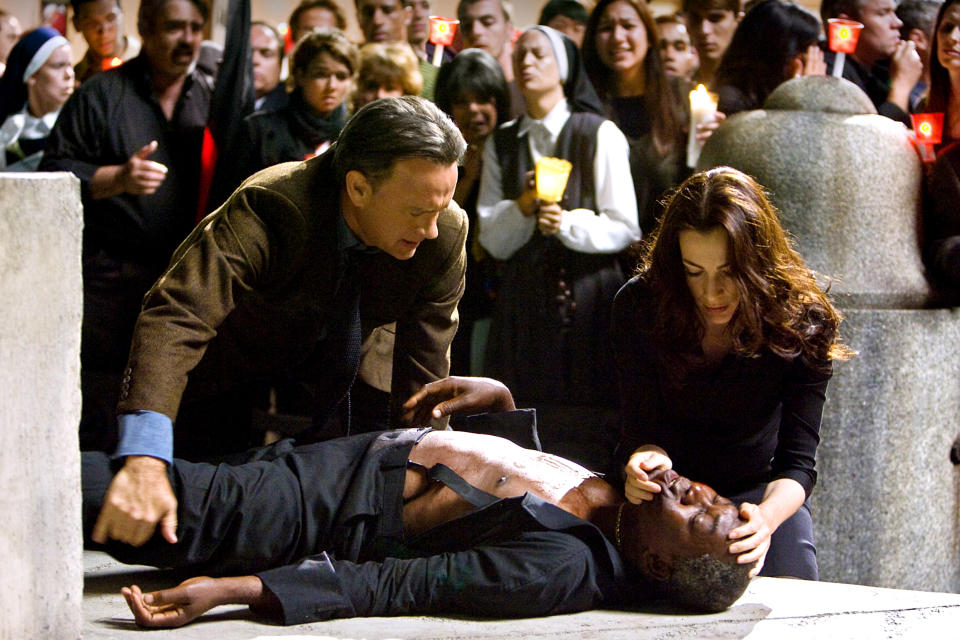How A WGA Strike Could Shake Up Theatrical Release Schedule As Studios & Exhibs Celebrate Box Office Boom – CinemaCon

In a week when distributors and exhibitors reconvene for their annual Las Vegas meet-up CinemaCon and celebrate the post-pandemic resurge of the box office, the motion picture industry is also bracing for a potential Writers Guild of America strike.
With production and deal-making slowing down — especially with 98% of WGA West and WGA East members authorizing a strike if a fair new film/TV deal isn’t met by the May 1 deadline — how could that possibly dent the box office boom, one Gower Analytics projects will result in an estimated $32 billion globally, up 24% from last year, and $9 billion stateside, up 200%?
More from Deadline
NATO CEOs, Outgoing & New, Talk Exhibition Rebound On CinemaCon Eve – The Deadline Q&A
CEO Pay High In 2022 Amid Industry Shakeup, Looming Writers Strike
WGA Strike Picket Line Locations List For Los Angeles & New York
Just as a majority of exhibitors are getting back on their feet financially after Covid’s great shutdown of 2020-21, studio sources outlined a worst-case scenario to Deadline should the WGA strike span more than four months.
In short, the theatrical release calendar would see several date changes for pics, as soon as Q4 this year. While the 2024 theatrical release calendar remains roughly intact in its first six months with completed movies coming down the pipeline, beyond that gets squishy; it’s in this scenario that studios might need to pull from Q4 2023.
RELATED: CinemaCon 2023 – Deadline’s Full Coverage
Such an aftermath from a possible strike isn’t as dramatic as it would be for TV production, which will feel it more immediately. Realize, the longest WGA strike on record was 1988 (March 7-August 7), lasting 153 days, followed by the 1960 strike at 146 days (Jan. 16-June 10), and then the 2007-08 strike (November 5, 2007-February 17, 2008) at 100 days.
There’s another wrinkle: With SAG-AFTRA’s contract expiring June 30, should that union strike it would prevent actors from doing publicity on their feature or TV projects (negotiations begin with with the AMPTP on June 7).

How does that jolt summer’s latter tentpoles, i.e., Mission: Impossible – Dead Reckoning – Part One (July 14), Oppenheimer and Barbie (July 21) and Haunted Mansion (July 28) among others? The good news for exhibition is that tentpole release dates are prized launch pads for movie studios, so they’re not apt to easily give them up. Hence, no moves among the big titles are expected this summer. Still, studio and distribution marketing chiefs remain in wait-and-see mode. On the other hand, the smaller movies that are publicity-dependent are prime to pivot should SAG-AFTRA strike. This past weekend, SAG-AFTRA’s National Board voted unanimously to approve a resolution “strongly in support” of the WGA in their ongoing talks with the AMPTP.
Exhibition’s Covid shutdown forced a lose-lose situation for studios and circuits. With most major box office capitals like Los Angeles and New York closed by health officials, studios continually pushed their tentpoles — read Black Widow, F9, No Time to Die, Venom: Let There Be Carnage, Minions: Rise of Gru, Jurassic World, Dominion, The Marvels and Creed III — deeper into the 2021-2023 calendar. Many circuits are still feeling the sting, with Cineworld and its sister U.S. chain trying to emerge from bankruptcy.

Warner Bros’ Tenet provided hope to get whatever remaining theaters opened during August 2020; the pic’s lackluster performance ($58.5 million domestic) only proved that L.A. and NYC were vital for studios to make bank on a high-priced movie. When No Time to Die moved off Thanksgiving 2020, causing other movies to shift, Cineworld boss Mooky Greidinger shut down the nation’s No. 2 chain, Regal, in response to the lack of tentpoles on the calendar. Domestic box office fell off a cliff amid the closures and lack of big titles, dropping 81% between 2019 ($11.4 billion) and 2020 ($2.2B), with a gradual rebuild in 2021 ($4.5B, +105%).
But really, could a strike create as much pain to the theatrical release schedule as the pandemic did? It’s not out of the question, per sources, should a WGA strike last more than four to six months. The schedule could be further exacerbated should the Directors Guild opt to strike for a lengthy period of time; that guild’s contract also expires June 30, with bargaining scheduled for May 10. Note the DGA went on strike only once, in 1987, when the DGA West stopped work for 15 minutes and the DGA East for 3 hours and 15 minutes.
While the pandemic forced studios to sell off big titles to streaming (i.e., Paramount with Coming 2 America and Skydance’s The Tomorrow War to Amazon Prime, MRC’s The Lovebirds to Netflix), it’s conceivable we could see a reverse trend now that Covid fears have eased among those attending cinemas: In a strike-impacting marketplace, studios could take a movie intended for streaming and move it onto the theatrical schedule to fill gaps.

It’s been reported how streamers could hold firm in contract talks with the guilds for a few months given their back supply of product, not to mention it’s an opportunity to slash bloated spending, shape up cash flow and kill bad deals. Motion picture studios also stand to save millions by stopping production for an earnings quarter. However, a delay in the feature distribution pipeline isn’t good for business, either. Not to mention, a delay in production could potentially cause another post-production logjam, one of the aftermaths of movies’ postponements during the pandemic. That left the late August-October 2022 box office and early winter this year a dry bed for product. In fact, we’re still waiting on movies delayed by the pandemic to hit theaters including Warner Bros/DC’s The Flash, which will get its first screening here at CinemaCon on Tuesday night, and Aquaman and the Lost Kingdom on December 20.

During the 100-day WGA strike of 2007-08, several blockbusters stuck to their release dates during that period, given the dates are a valuable commodity. Those titles included Will Smith’s I Am Legend ($77.2M opening, a record than for an original movie’s start, $256.3M domestic), Alvin and the Chipmunks ($44.3M, $217.3M) and National Treasure: Book of Secrets ($44.7M, $219.9M), while 2008 rang in the J.J. Abrams-produced Cloverfield ($40M) and the Katherine Heigl romantic comedy 27 Dresses ($23M opening $76.8M). The year 2008 also saw enormous tentpoles hitting their key dates: Marvel Studios’ Iron Man (May 2), Indiana Jones and the Kingdom of the Crystal Skull (May 22) and The Dark Knight (July 18).
Greatly impacted at the time were tentpoles intended for 2009 that were racing toward a March 1, 2008 production start for several studios. The 2007-08 strike prompted studios to scrap either pricey or half-baked projects. One of the more prolific features to be scrapped was a George Miller-directed version of Warner Bros/DC’s Justice League with Adam Brody as The Flash and at the time fresh-faced actors Armie Hammer as Batman and Megan Gale as Wonder Woman. Even though Australian tax breaks were a hurdle at the time, Warners wanted a polish on the script by Kieran and Michele Mulroney, which wasn’t possible due to the strike. The studio let the actors’ options expire.

One upcoming feature production that is safeguarding itself from a lengthy WGA strike is James Gunn’s Superman: Legacy, which is planning an early 2024 start for a July 11, 2025 theatrical release. That movie will serve as the start of Gunn and fellow DC co-boss Peter Safran’s “Gods and Monsters” universe for the comic book label. Gunn showed off a cover of the screenplay on social media and announced the start of pre-production earlier this week, with “costumes, production design, and more now up and running.” Safran is expected to take the stage during Warner Bros’ CinemaCon presentation Tuesday, while Gunn, who is on a world tour for Disney/Marvel Studios’ Guardians of the Galaxy Vol. 3, will show up via video.

Another delayed tentpole from the 2007-08 strike was the Ron Howard-directed adaptation of Dan Brown’s Angels & Demons; that pic’s release date was pushed from Christmas 2008 to May 15, 2009. Michael Mann’s Edwin A. Salt starring Tom Cruise morphed into the spy action title Salt starring Angelina Jolie and directed by Phillip Noyce. The movie finally surfaced in July 2010. Both were huge hits for Sony, grossing $486M and $293M, respectively, around the world.
However, haste makes waste, and when studios rush key projects into production due to the strike, bad apples result. Such was the case in 2007-2008 for the Rob Marshall musical Nine ($54M WW, $80M cost) and the Will Ferrell remake of the 1970s TV series Land of the Lost ($68.8M WW, $100M cost), both of which were critical and financial duds. Although there wasn’t a strike in 2001, studios’ anticipation of one led to a slew of undercooked titles including The Truth About Charlie, Reign of Fire and Dark Blue.

“We did not have any discussions in our guild meetings about the labor issue,” outgoing National Association of Theatre Owners president and CEO John Fithian recently told Deadline in an exit interview, looking to put exhibition partners at ease.
“We’re hopeful, optimistic that quick solutions that are fair to all parties are achieved,” Fithian added.
Even though feature writers have presented their wants in the WGA’s pattern of demands, many motion picture execs believe the latest round of talks boil down to what’s vital for streaming and TV scribes. But following a rough pandemic, the rebounding theatrical business could be impacted once again.
Exclaimed one optimistic distribution executive, “The hope is that cooler heads prevail.”
Jill Goldsmith contributed to this report.
Best of Deadline
2023 Premiere Dates For New & Returning Series On Broadcast, Cable & Streaming
WGA Strike Picket Line Locations List And Times Set For Los Angeles & New York - Update
Sign up for Deadline's Newsletter. For the latest news, follow us on Facebook, Twitter, and Instagram.

